I wasn’t quite sure what to expect from Pokémon Legends Arceus when it was first announced. Sure, the fundamentals of it were easy to grasp - a semi-open world Pokémon adventure that placed an emphasis on exploration and Pokédex completion instead of the tried and tested formula of battling to become the region’s Pokémon Master. But the real question was: could developer Game Freak create a Pokémon game this ambitious?
Now that Pokémon Legends Arceus is out, I’m still not quite sure we have an answer. Don’t get me wrong, Legends is an extremely enjoyable game , and the changes to the long-established Pokémon formula feel fresh enough to set the game apart from its mainline counterparts. But therein lies a problem unique to the Pokémon games - where does the mainline series go from here?
It’s very easy to get immersed in the ancient world of Hisui and the satisfying gameplay loop of consistently filling out your Pokédex, so much so that I hope the Legends brand will continue to be its own thing. The question is, then, should Legends become the new standard for Pokémon games going forward, and is that really what the series needs?

Poké Wrap
For the last few years, it’s been evident that the Pokémon games have flailed around more than a stranded Magikarp in terms of what they wanted to be. For better or worse, the games have been hugely experimental, arguably since the release of Pokémon Sun and Moon way back on the 3DS, which changed up progression by eschewing gym battles for encounters with singularly powerful Pokémon.
Since then, we’ve had Let’s Go Pikachu and Let’s Go Eevee, which returned players to Red and Blue’s Kanto region and placed an emphasis on catching Pokémon using the unique motion controls of the Joy-Con. Those games were followed by the next mainline entries, Pokémon Sword and Shield , which reintroduced familiar elements such as gym battles, but were infamously divisive for being intensely linear and dropping the National Dex in favor of a smaller, curated roster of Pokémon.
In the years between then and now, we also saw the release of New Pokémon Snap , which arguably failed to capture the magic of the N64 original, and the Pokémon Brilliant Diamond and Shining Pearl Gen 4 remakes which again proved to be divisive due to an odd aesthetic choice and overall lack of graphical fidelity compared to even pixelated entries like the superlative Pokémon HeartGold and SoulSilver remakes from 2010.
It’s no shock, then, that Pokémon Legends Arceus has received near-universal acclaim from fans and critics alike. The game offers a meaningful shakeup to the Pokémon formula, and it does so by further honing gameplay features from this very experimental phase.
There’s a ton to love about Pokémon Legends Arceus, and a lot of that is down to the foundations laid by other Pokémon titles released across the last decade. The emphasis on catching from the Let’s Go games, for example, as well as Sun and Moon’s boss Pokémon encounters. Not to mention Sword and Shield’s free-roaming Wild Area taken to its logical conclusion. These games walked so that Legends could run.

The Next Generation
But if Legends is the culmination of this experimentation, then, where do the Pokémon games go from here? It’s likely that The Pokémon Company, Game Freak and other associated teams already know the answer, as there’s bound to be more Pokémon projects in pre-production and active development.
A new Pokémon game is as certain as death and taxes, but in a post-Legends world, it’s become a little harder to predict how the next big Pokémon game will take shape. Okay, catching and battling are a dead cert, but now that Pokémon Legends Arceus has disrupted the formula to such a degree, what the next Pokémon game will look like is, to an extent, up in the air. That’s both exciting and slightly nerve-wracking.
For my two cents, the days of traipsing through cities and towns connected by routes and caves in order to shore up an octet of gym badges should be over and done with. That gameplay loop worked admirably for a time, but Pokémon and its various development teams deserve to work on a more ambitious project than that. And if Pokémon Legends Arceus is the first step on that path of ambition, then I say fantastic. More of that, please.
That being said, if that ambition takes the shape of a game with a much larger world and a much greater variety of Pokémon, it’s going to need better hardware , because Legends is buckling under the pressure of the Nintendo Switch ’s relatively limited specs. As lovely as Legends’ art direction can be, it’s not quite been able to shake the reputation that recent Pokémon titles are ugly, and while I don’t strictly agree with that assessment, some visual elements are too intrusive to ignore.
Object pop-in is extremely noticeable, especially when you’re blasting through the wilderness on a Ride Pokémon like Wyrdeer. Trees, grass and NPCs phase into existence mere meters from your character. Individual texture maps are large, making the seams between them occasionally noticeable. What’s more, there’s no anti-aliasing whatsoever. That’s a norm for Switch titles in general, but it makes object shimmering and the low-quality shadows supremely evident.

Greater expectations?
Pokémon Legends Arceus, I feel, absolutely does move the series in a positive direction. It’s managed to lift the games out of a near-decade of stagnancy, but I also think that there’s still plenty of room for improvement, and a lot of that comes down to management of the franchise and Nintendo’s ability to release more powerful hardware.
To that point, it’s likely that the next big Pokémon game will launch on the Switch, for better or worse. What’s also likely is that it will maintain a typically tight development cycle, given that the games do - unfortunately - have to stay on track with the Pokémon franchise as a whole. That includes merchandising and the ever-popular anime, neither of which wait for any man.
Pair this with the fact that Game Freak is still a relatively small, independent studio, and I imagine the developer continues to find itself in a difficult position - tasked with creating ever-more ambitious Pokémon games on a constant cycle. However, Pokémon Legends Arceus, in my mind, demonstrates that Game Freak is well up to the task of creating a truly excellent Pokémon game, but it’ll need some help from its benefactors before that happens.
As such, I expect the next big Pokémon game won’t leave quite as much of an impact as Legends has in the short term. I’d love to be wrong, but I do feel as if the series will once again go through the motions, at least for the next half-decade or so. I will of course still look forward to any future Pokémon titles - especially a Legends follow-up - but I’d love for a new Pokémon game to genuinely blow me away.
QD-OLED TVs are coming soon, and they're going to be pretty special
QD-OLED TVs are the next big innovation in television technology – and they’re going to arrive on store shelves in the next few months.
If you’ve been following TV technology for a few years now, the idea of something new and even better on the market might make you a bit skeptical. First you were told that plasma panels were going to be the future of TVs, then OLED , then QLED , then QLED with mini-LED and next MicroLED . The list goes on and on...
So what makes QD-OLED different and why is everyone excited about it?
In short, QD-OLED is a better version of OLED that combines some of the learnings from QLED and its quantum dot filters with OLED’s self-emissive pixel structure. The result is incredible contrast and significantly improved color saturation.
The best part? While the screens will be slightly more expensive at launch than OLED, they’ll still be very much within reach of the average cinephile.
What is QD-OLED?
QD-OLED is the combination of a quantum dot filter (QD) in front of blue organic light-emitting diodes (OLED). It’s different from how OLED TVs have been manufactured in the past, and it promises a wealth of benefits for gamers, cinephiles and TV lovers.
What are QD-OLED’s advantages and disadvantages?
The big advantage of adding a QD filter is better color saturation. Early reports from Samsung and Sony suggest that we could see a 200% increase in color saturation compared to traditional LED-LCD screens, plus the contrast of OLED TVs. One potential disadvantage is that individual LEDs may burn out or hold a color in between uses.
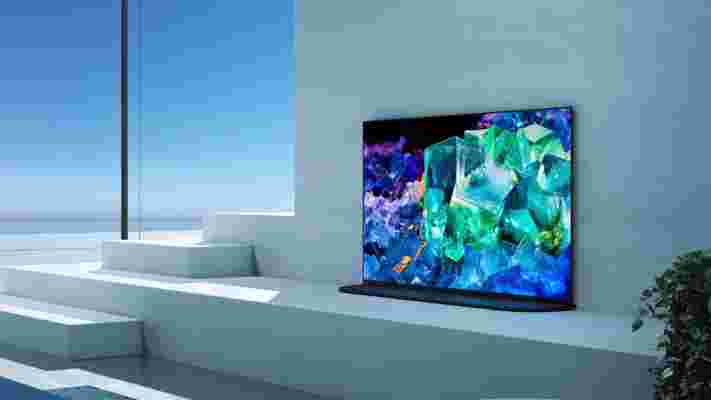
Are QD-OLED TVs expensive?
We’re still waiting for final pricing, but early reports suggest that they won’t be significantly more expensive than the OLED TVs currently on the market. Early rumors put QD-OLED models at around $2,000 to $3,000 (around £1,700 or AU$5,000) but we’ll know more about pricing in April or May of this year.
Will you be able to see a difference with QD-OLED?
By and large, yes, you will. QD-OLED screens will have that wow factor of QLED with the contrast of OLED TVs. If you’re coming from a traditional LED-LCD screen, QD-OLED will seem significantly more colorful and will have those inky black levels from OLED TVs.
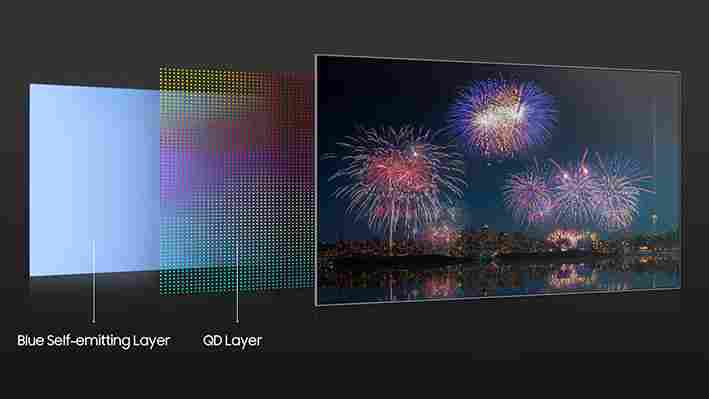
How does QD-OLED work?
On paper, QD-OLED sounds so simple. You take a blue self-luminescent layer, throw on a film of quantum dots, and then add a glass screen to the front. Have some signal processing happening in the base of the TV, throw some inputs on the back and voila! You have a QD-OLED.
That is, of course, a gross simplification of what’s happening – but it does explain the basics.
So what are we looking at in terms of specs and features? Well, it will vary depending on which manufacturer is selling the TV, but they should all be 4K HDR smart TVs. It’s unlikely that we’ll see 8K QD-OLED TVs this year – but that is something we could see eventually.
QD-OLED TVs: where can you get one?
As of right this second, there’s nowhere you can actually buy a QD-OLED TV. Only one model has been announced for 2022 – the Sony Master Series A95K. There’s no word yet on how much it will cost or when it will be available, but Sony debuted the TV at CES 2022 with plans to release the TV sometime this year.
Of course, Sony isn’t the only one with its hand in the proverbial honey pot here. Samsung Display has also announced that it’s currently working on a QD-OLED display of its own and put it on display behind closed doors at CES 2022. Samsung Electronics hasn’t said whether it will use the display in any consumer TVs this year, but it seems like it’s only a matter of time until that becomes a reality.
Last but not least, we wouldn’t count LG out of this arms race – even if it hasn’t officially said anything about QD-OLED TVs, it’s been a huge proponent of OLED technology. LG currently has a rival product called OLED evo that offers some advantages over regular OLED – including increased luminance – but that doesn’t preclude LG from pursuing something in QD-OLED in the future.
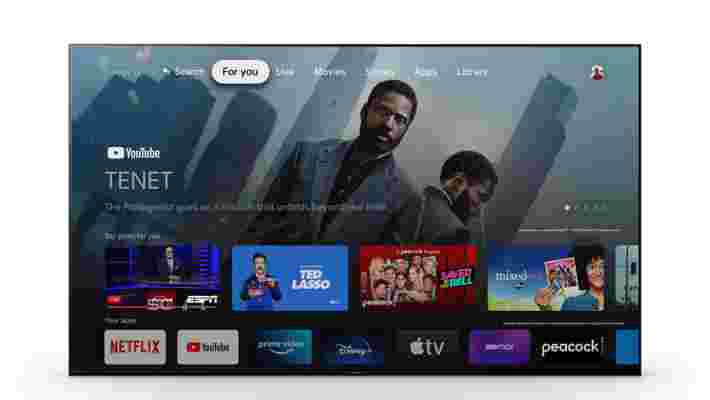
Should you buy a QD-OLED TV this year?
With only one model to pick from with a still-unannounced price tag, we wouldn’t hold out for a QD-OLED if you’re in the market for a new TV right this minute. There are a lot of variables right now in the TV industry from production issues to shipping problems that could impact the price and delivery date of these screens. In short, we’re very likely going to start seeing them on store shelves in the next six to eight months, but it could be a lot longer, too.
That being said, we’d probably recommend waiting for one of this year’s OLED TVs that are far closer to release. The LG C2 OLED uses the aforementioned OLED evo panel in the 55-inch screen size and above, and it’s likely to scoop up a number of awards later this year. That should be out in the next two to three months at most major retailers.
For those looking to be an early adopter of the technology, we certainly wouldn’t stop you from waiting; on paper, QD-OLED sounds revolutionary – however, we feel that most folks can safely pick up a non-QD-OLED TV this year and look forward to buying a QD-OLED for the next purchase in five years once the technology has come down in cost some.
Samsung Galaxy S22 Ultra vs iPhone 13 Pro Max: heavyweight phone contenders
The Samsung Galaxy S22 Ultra is shaping up to be the most exciting phone of early 2022. But if it’s to rule the calendar year like its predecessor, the Galaxy S21 Ultra , it’s going to have to take on the iPhone 13 Pro Max .
Apple’s latest super-sizer has set new standards in camera quality, stamina, and performance. Can the Galaxy S22 Ultra match it point for point?
We won’t have a full answer to that until we’ve spent some quality time with the new phone, but what we have now is the raw specs. Let’s compare and contrast the two.
Samsung Galaxy S22 Ultra vs iPhone 13 Pro Max price and availability
The Samsung Galaxy S22 Ultra was revealed to the world on February 9, 2022. Prices start from $1,199.99 / £1,149 / AU$1,849 for the 8GB RAM/128GB model, moving up to $1,299.99 / £1249 / AU$1,999 for 12GB/256GB, then $1,399.99 / £1,329 / AU$2,149 for 12GB/512GB, and topping out at $1,599.99 / £1,499 / AU$2,449 for the 12GB/1TB top dog.
The iPhone 13 Pro Max hit shops on September 24, 2021. Prices start from $1,099 / £1,049 / AU$1,699 for the 128GB model, moving up to $1,199 / £1,149 / AU$1,869 for 256GB, then $1,399 / £1,349 / AU$2,219 for 512GB, and topping out at $1,599 / £1,549 / AU$2,569 for the 1TB model.
Design
It’s not just the cost of these two phones that earns them the label of ‘pocket-troubling’. They’re also seam-bustingly massive.
The Galaxy S22 Ultra measures 163 x 77.9 x 8.9mm, while the iPhone 13 Pro Max measures 160.8 x 78.1 x 7.65mm. This makes the Samsung much taller and fatter than its opposition, and just a fraction narrower.
However, Samsung’s phone is also lighter, weighing 229g compared to the iPhone 13 Pro’s 238g. Let’s not split hairs though, they’re both very heavy.
The reason for the iPhone 13 Pro Max’s heavier status is likely down to its use of stainless steel in the frame. Samsung has used aluminum, which is lighter, if not quite as tough or premium-feeling.
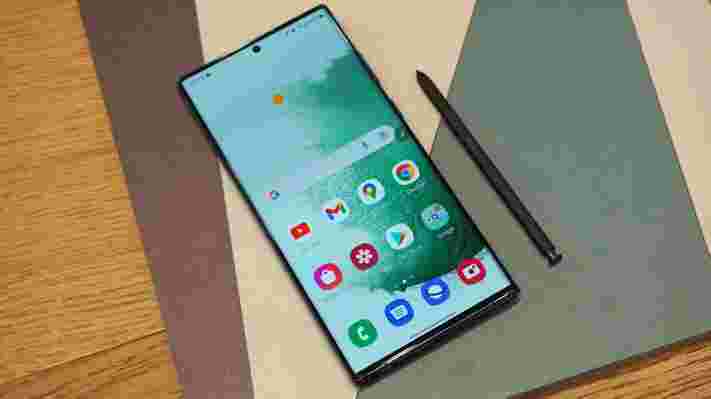
In terms of aesthetics, there’s not much that these two phones have in common. The Galaxy S22 Ultra is a little boxier than the rest of the Galaxy S22 range, with flat top and bottom edges. But its sides are curved, and the display subtly fades into the body.
Conversely, the iPhone 13 Pro Max is all sharp corners and flat surfaces, including a dead-flat display.
However, it’s the Galaxy S22 Ultra that manages to get its rear panel flatter, with no bulging camera module to speak off. By contrast, the iPhone 13 Pro Max positions its three camera lenses on a glass blister of sorts, which somewhat spoils the iPhone’s clean lines.
Both phones have an IP68 rating, so they’ll stand up to fine dust and an extended dip in a pool.
One other crucial design difference here relates to the display notches. While the Galaxy S22 Ultra uses a modest hole-punch notch, the iPhone 13 Pro has a full notch that eats into more of the display.
Apple has reduced its iconic display notch by 20% and the iPhone 13 Pro Max’s larger display makes it less of an eyesore than on the other iPhones in the range. However, it’s still not as elegant as Samsung’s centrally placed circle.
Display
The Samsung Galaxy S22 Ultra’s display is bigger, sharper, and brighter than the iPhone 13 Pro Max equivalent, and it’s also more energy-efficient.
Let’s break those stats down. The Galaxy S22 Ultra display is a 6.8-inch AMOLED with a 3200 x 1440 (QHD+) resolution. The iPhone 13 Pro Max display is a 6.7-inch OLED with a 2778 x 1284 resolution.
Both screens refresh at a maximum rate of 120Hz, which makes them equally smooth. But while the Galaxy S22 Ultra can scale down as low as 1Hz, the iPhone 13 Pro Max can only scale down to 10Hz.
This doesn’t mean anything in terms of image quality, but it might just help the Galaxy S22 Ultra get closer to the iPhone 13 Pro Max’s formidable stamina. But more on that later.
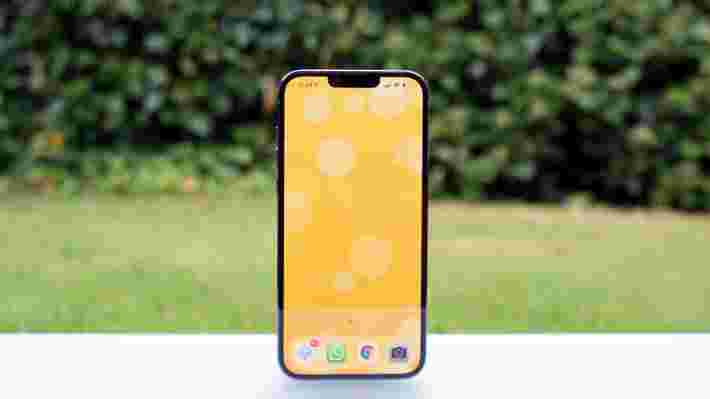
Samsung’s display can get much brighter in peak ambient brightness, to the tune of an eyeball-searing 1,750 nits. The iPhone 13 Pro Max can hit a maximum of 1,200 nits.
Despite all this, we can’t judge which is the better display until we’ve spent some quality time with the Galaxy S22 Ultra. We have to discern how color-accurate and balanced Samsung’s screen is compared to its superb rival, which has been expertly tuned.
Samsung is the undisputed master of AMOLED display production and tuning, though, so we have no doubt it can back up that spec advantage with a superior viewing experience.
Camera
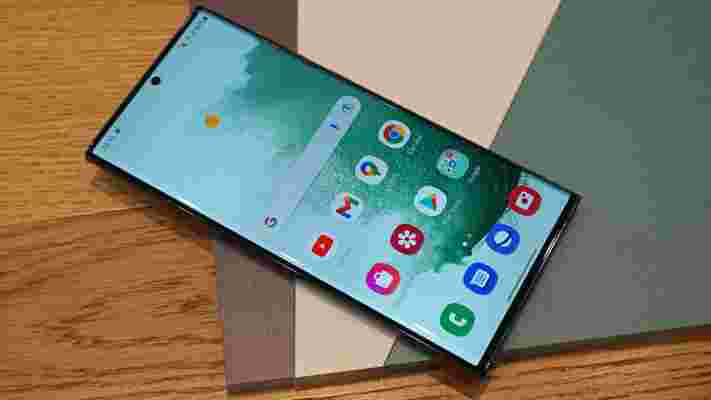
The Galaxy S22 Ultra has a very similar hardware set-up to the Galaxy S21 Ultra. That means a quad-camera system comprising a 108MP wide camera, a 12MP ultra-wide camera, and a pair of 10MP cameras.
Apple’s iPhone 13 Pro Max gives you a triple-camera system, each packing a 12MP sensor and covering wide, ultra-wide, and telephoto duties.
Given the relative lack of change to the hardware, Samsung is going to have to really bolster its AI algorithms and color science to be able to top the iPhone 13 Pro Max, which is pretty much the best camera phone on the market right now.
Apple’s natural colors, effortless point-and-shoot accuracy, and uncannily good night shots (aided by sensor-shift stabilization) are tough to beat.
The one area where we’re confident Samsung has won is the telephoto stakes. Its two 10MP sensors capture 3x and 10x zoomed shots, while Apple’s single 12MP telephoto only extends to 3x.
Put simply, the Galaxy S21 Ultra was better at zoomed shots than the iPhone 13 Pro Max, so it’s almost certain that its successor will at least maintain that gap.
Apple’s phones have always had the edge in video capture, and it introduced some nifty software/AI tricks with the iPhone 13 Pro Max. That includes support for the high-end ProRes video codec, as well as Cinematic Mode, which enables you to apply Portrait-like bokeh effects to footage and adjust the point of focus in post.
As for selfies, the Galaxy S22 Ultra has a 40MP sensor, while the iPhone 13 Pro has another 12MP sensor.
Samsung has a serious job on its hands overtaking the iPhone’s camera lead, but the Galaxy S22 Ultra will undoubtedly come to the fight with its own unique weapons.
Specs and performance
The Samsung Galaxy S22 Ultra packs a 4nm processor, whether you’re talking about the Snapdragon 8 Gen 1 or the Exynos 2200. The one you’ll receive depends on which region you live in. If you're in the US, you'll get Snapdragon while those in Europe and Australia will get the Exynos.
Early signs point to a marginal increase in performance over the previous chips, with the main gains coming from the GPU. We’ll be putting these claims to the test in due course.
If true, it’s likely that the iPhone 13 Pro Max will be the faster phone of the two. Apple claimed that its A15 Bionic chip was up to 50% faster than the Android opposition at the time of its launch. And as we’ve just discussed, the Galaxy S22 Ultra’s new chips don’t seem to provide that much of an advance.
We are interested to see how the Exynos 2200 performs in gaming terms, however. This is the first fruit of Samsung’s partnership with AMD, resulting in the same RDNA2 GPU architecture that you’ll find in the PS5 and Xbox Series X consoles.
This, technically, enables the Exynos-powered Galaxy S22 Ultra to throw about advanced ray-tracing effects. We’ll have to wait and see just how many game developers take advantage of this, but it’s exciting news for mobile gamers nonetheless.
It’s largely worthless comparing RAM capacities, given the different ways in which iOS and Android make use of their hardware resources. But for the record, the iPhone 13 Pro Max packs 6GB and the Samsung Galaxy S22 Ultra gives you 8 or 12GB.
Storage allotments are identical on both phones, with options for 128GB, 256GB, 512GB, or 1TB.
One final stand-out spec for the Samsung Galaxy S22 Ultra is S Pen compatibility. Samsung has gone back to its defunct Galaxy Note range and supplied the Galaxy S22 Ultra with a built-in stylus.
By contrast, the iPhone 13 Pro Max doesn’t have support for the Apple Pencil, and it would be an unwieldy
Battery
Samsung has given its latest flagship phone a 5,000mAh battery, which is much larger than the iPhone 13 Pro Max’s 4,352mAh cell.
It would be silly to take that as a win for the Samsung, however. We’ve already alluded to the different ways in which iOS and Android handle their resources and that has a bearing on battery usage too.
To illustrate that fact, we found the iPhone 13 Pro Max to have the best battery life of any iPhone we’ve ever used. We were able to go through a long day of intensive usage, and still have a third of a tank left.
Conversely, the Galaxy S21 Ultra – which also has a 5,000mAh battery – struggled to make it through a full day once we’d activated the 120Hz display.
We’re hopeful that Samsung has improved efficiency for the Galaxy S22 Ultra. It has a smarter display and a more efficient processor on paper, but the iPhone 13 Pro Max is asking some tough questions here.
Samsung turns the tables with its charging provision, though. The Galaxy S22 Ultra supports 45W charging, which is a huge boost from the Galaxy S21 Ultra. It’s also much better than the iPhone 13 Pro Max’s 27W.
Neither manufacturer bundles a charging brick in with their phones, however, which is a little annoying.
When it comes to wireless charging, the Galaxy S22 Ultra supports 15W, while the iPhone 13 Pro Max only stretches to 7.5W.
Buy a special MagSafe charger (Apple’s magnetic standard), however, and the iPhone 13 Pro Max can also hit 15W speeds.
Takeaway
The Samsung Galaxy S21 Ultra and the iPhone 13 Pro Max were our top smartphone picks of 2021, and the Galaxy S22 Ultra looks set to seamlessly replace the S21 in the range for 2022.
Indeed, with superior S Pen integration and a switch to a sleek Galaxy Note-indebted design, it’s quite possible that Samsung will bolster its (really quite slim) lead over Apple.
The smartphone equation is rarely as simple as that, of course, and a potential lack of progress (on paper at least) in the camera and performance departments could sour the mood. It remains to be seen if Samsung can match Apple’s impressive leap forward in the stamina stakes, too.
We’ll update this comparison when we have hands-on experience with the Galaxy S22 Ultra. However, these two phones are almost certain to be vying for the top prizes for much of 2022.